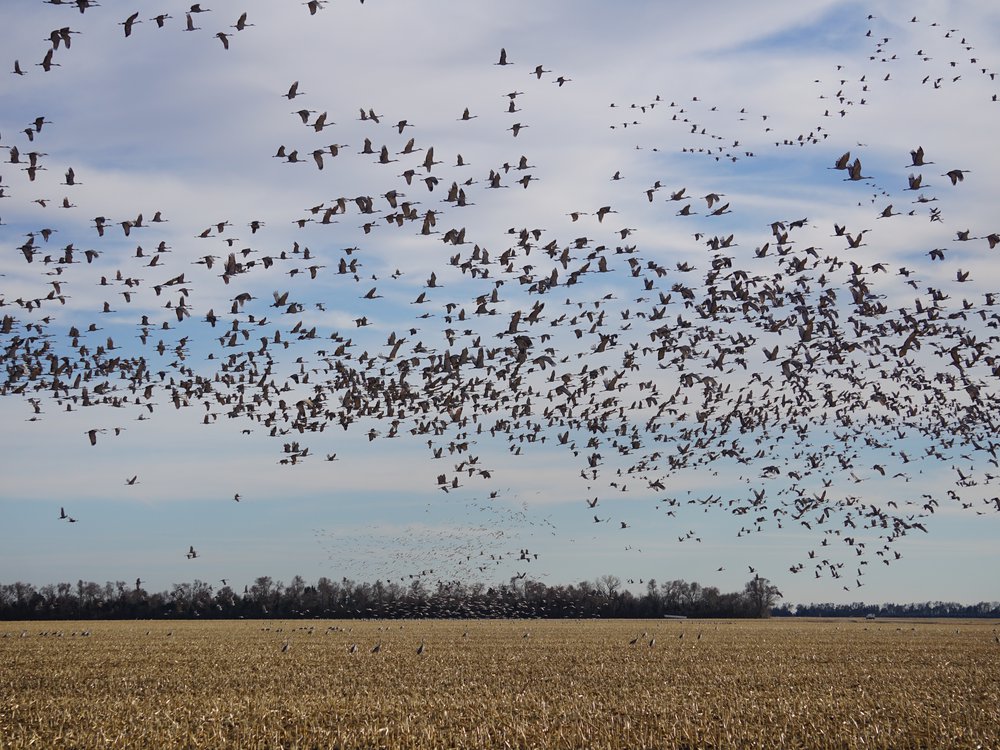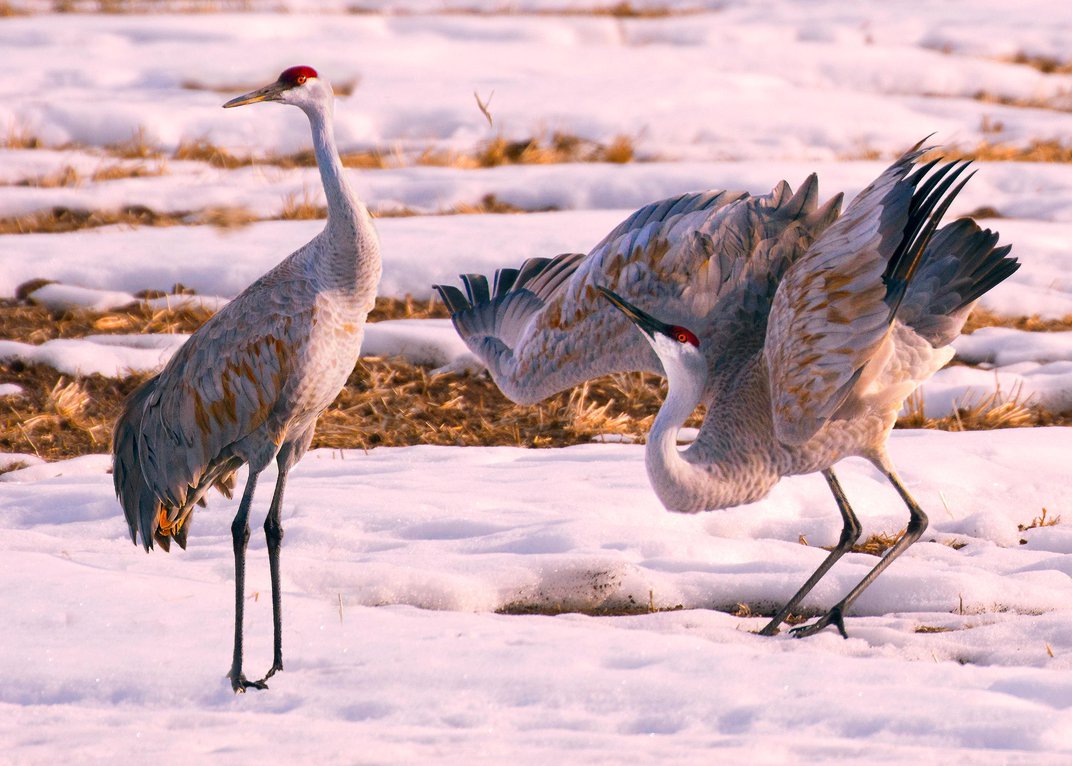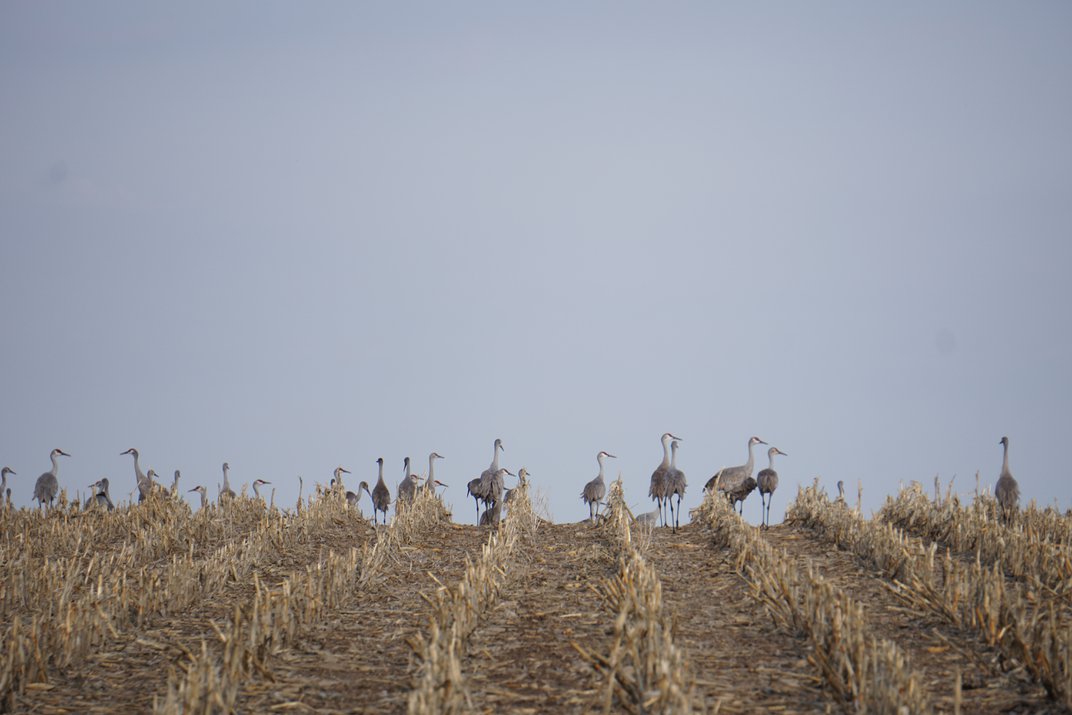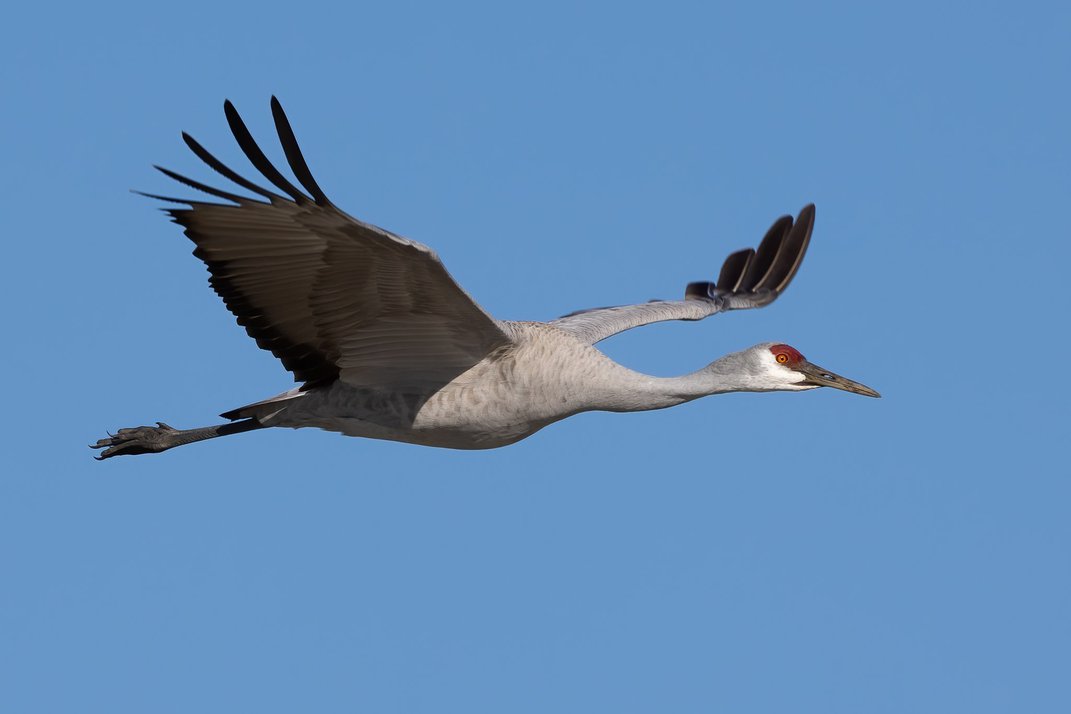See Thousands of Sandhill Cranes Gather in Nebraska
Every year, travelers attempt to witness the birds on their long journey north

Just as they’ve done for thousands of years, sandhill cranes are once again descending upon central Nebraska for their annual stopover as they migrate north.
Every spring, hundreds of thousands of the lanky gray birds congregate in the Platte River Valley of the Cornhusker State. While there, they feast on corn kernels left over from last fall’s harvest—as well as bugs and other critters—before making the long journey to their breeding grounds in Alaska, Canada and eastern Siberia.
Roughly 27,000 sandhill cranes have already arrived along the river between the towns of Chapman and Overton, according to the latest figures from the nonprofit Crane Trust, which conducts a weekly count of the cranes.

During the winter, the cranes live in Mexico, Florida, Texas and Arizona. The first few thousand birds start arriving in central Nebraska in early to mid-February, though the timeline fluctuates from year to year. Their numbers tend to gradually increase until they peak in mid to late March.
Each crane stays in central Nebraska for about a month, according to the Nebraska Game and Parks Commission. They spend their days pecking around in empty corn fields, then return to the safety of the river each night to roost. Per the National Audubon Society, they can gain as much as 20 percent of their body weight during their short stay in Nebraska.

The annual migration is an impressive spectacle to behold. Sandhill cranes are large birds, typically standing between three and four feet tall. They have long, skinny legs and a distinctive dark red patch on their heads. To communicate, they make a trilling noise that ornithologists describe as a rattling bugle. When large groups of cranes call out at the same time, they fill the air with loud, otherworldly sounds.
As columnist Rick Windham writes for the North Platte Telegraph, “You will most likely hear [the cranes] long before you see them. The call of sandhill cranes can be heard at tremendous distances.”
“To me,” he adds, “it is sound that stirs the spirit.”
Every Monday during the migration, wildlife biologists in Nebraska count the cranes—as well as other incidental birds, like trumpeter swans, bald eagles and dark geese—while flying overhead in a small airplane. Occasionally, they’ll spot a bright white whooping crane among the sandhills, but these endangered birds are a rare sight in Nebraska.
The weekly crane counts, posted on the Crane Trust’s website, not only help curious birders around the world stay in the loop, but they also allow biologists to track migratory trends over time.
“I have a camera and binoculars ready at all times,” says Bethany Ostrom, a wildlife biologist who conducts aerial surveys of the birds, to the Omaha World-Herald’s Marjie Ducey. “I’m constantly scanning the entire landscape, but mostly the river.”

Travelers who are up for a road trip can experience the migration themselves by simply heading toward the Platte River, which runs parallel to Interstate 80 in Nebraska. The Central Platte Natural Resources District maintains several crane and wildlife viewing decks—complete with free parking—along the river; these are best for viewing the cranes when they are roosting on the water at sunrise and sunset. During the day, travelers can spot the cranes in corn fields near the Platte.
The Crane Trust offers several kinds of guided excursions throughout the spring. The Iain Nicolson Audubon Center at Rowe Sanctuary, located in nearby Gibbon, also organizes guided experiences and tours. Both organizations run indoor visitors’ centers, where travelers can stop for information about the cranes, as well as advice on how to spot them.

